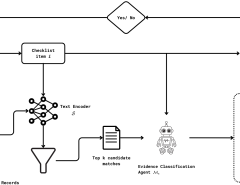SpectraNest
Elevator Pitch: Imagine a world where your internet never slows down, your calls never drop, and your videos stream flawlessly, no matter the time or place. SpectraNest makes this a reality by dynamically optimizing spectrum sharing between satellite and terrestrial networks, ensuring seamless connectivity for everyone, everywhere.
Concept
An advanced spectrum management platform facilitating optimal terrestrial and satellite spectrum sharing.
Objective
To enable efficient and dynamic spectrum sharing between terrestrial and satellite communications systems, reducing interference and optimizing bandwidth usage.
Solution
Leveraging ASCENT’s technology, SpectraNest will offer dynamic spectrum management services through a cloud-based platform that adapts in real-time to contextual changes (e.g., weather, urban development) to optimize spectrum sharing and minimize interference.
Revenue Model
Subscription-based model for telecom operators and satellite communication providers, along with consulting services for policymakers and regulators on spectrum management policies.
Target Market
Telecommunication companies, satellite communication providers, regulatory bodies, and policymakers.
Expansion Plan
Starting with key markets with high demand for spectrum and then expanding globally, leveraging partnerships with telecom and satellite firms and engaging with international regulatory bodies.
Potential Challenges
Technical challenges in accurately predicting and managing interference, market resistance due to the entrenched interests of incumbent spectrum holders, and the evolving regulatory landscape.
Customer Problem
The growing demand for spectrum amidst scarce resources causes interference and inefficiencies in spectrum utilization.
Regulatory and Ethical Issues
Ensuring compliance with international and national spectrum regulations, ethical considerations in prioritizing access to spectrum, and maintaining data privacy for collected context information.
Disruptiveness
SpectraNest promises to revolutionize how spectrum is shared and managed, potentially making static spectrum allocation practices obsolete and ushering in an era of efficient, dynamic spectrum usage.
Check out our related research summary: here.



Leave a Reply